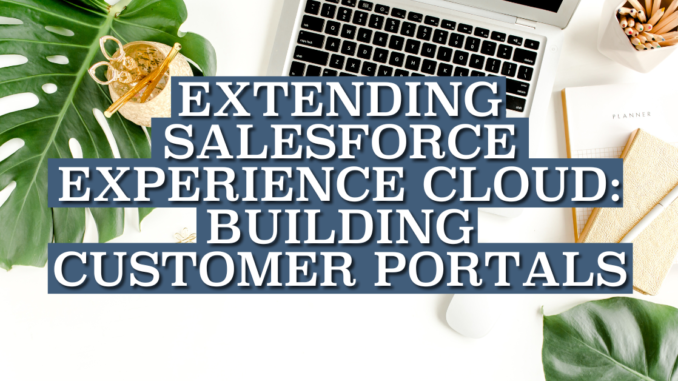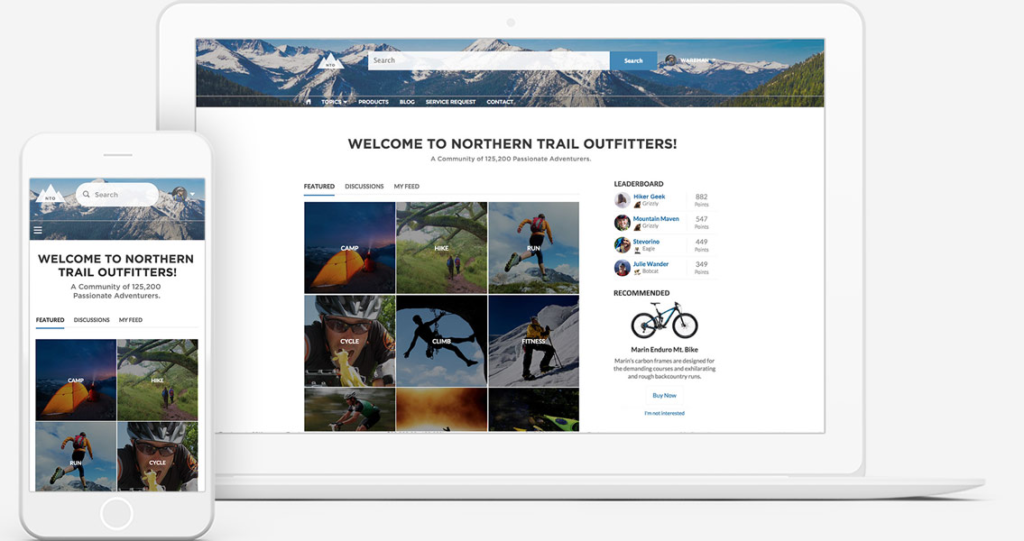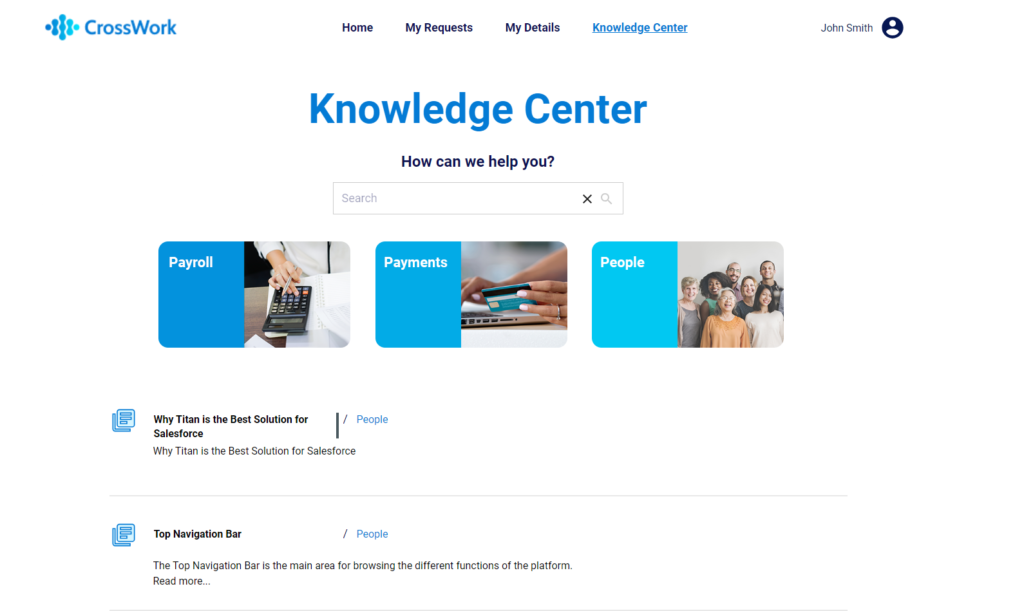
Building an engaging customer portal is a great way to showcase your business and create convenient self-service options for customers. It also helps you stay constantly connected with your client base. Of course, you take your customer portal to the next level when you decide to integrate it with Salesforce. Choosing to connect your portal with Salesforce means you have access to the richest CRM data on the planet. It also enables you to create personalized journeys for every customer. Salesforce Experience Cloud is an attractive option if you want to build customer portals for the #1 CRM. In this article, we provide some background on Experience Cloud and explain some of this product’s key pros and cons. We then check out two ways you can extend your Experience Cloud. You can do it either through custom development or by using a Salesforce app. Let’s dive in!
Salesforce Community Cloud
Before we had Experience Cloud, there was Salesforce Community Cloud. Community Cloud gave you the ability to create connected experiences for customers and build thriving digital communities around shared interests, skills, and industries. Community Cloud had many great features such as the ability to help you track and measure user engagement as well as integrate with your eCommerce platform.
Salesforce Community Cloud versus Experience Cloud
Community Cloud was ultimately rebranded as Experience Cloud to better encapsulate the product’s ability to do so much more than just build communities. Experience Cloud goes further to help you build a dazzling array of digital experiences such as web and mobile apps, knowledge bases, and of course customer portals.

What are the biggest advantages of Salesforce Experience Cloud?
Salesforce Experience Cloud has several advantages and using this tool you can build impressive, branded websites and portals. Here are some of its biggest wins you will unlock when you implement Salesforce Experience Cloud.
- You can purchase or get Lightning Bolt solutions for free on the AppExchange
- Drag-and-drop builder that requires no code for straightforward use cases
- Design and brand your portal
- Easy access to Salesforce’s treasure trove of Customer 360 data.
- Integrates easily with Salesforce’s other products as well as a wide range of third-party tools on the AppExchange
- Recent upgrades to the UI for Aura and LWR Sites have been implemented
Experience Cloud Limitations
Despite Experience Cloud features being extremely powerful, it still has several limitations. Depending on the resources in your team and the complexity of your use case, it might not be the best tool with which to build a customer portal.
For one, your out-of-the-box drag-and-drop tools do not give you much wiggle room to customize the page layout. In this regard, Experience Cloud can be inflexible in terms of UX and page layout. From a UX perspective, many exciting elements that are not available with Experience Cloud such as repeated elements, modal screens, or elements that open the user’s camera when clicked on. From the perspective of your page layout, neither Experience Cloud nor Dynamic Forms offer certain engaging and useful elements such as accordions, sliders, and carousels. If you have a simple use case, this is no big deal, but if you want the freedom to work with any layout you like and boost the user experience, it might be an issue.
Another issue with Experience Cloud is that you can’t create separate layouts based on different devices. You do have the ability to display or hide specific elements based on the device you are using but maintaining this is cumbersome and involves creating multiple layouts for no good reason. Another biggie is that Experience Cloud does not enable input validations in real-time. Finally, Experience Cloud does provide some great templates, but they cover limited use cases. This means in many instances you will have to build your customer portal from scratch.
Custom Development to Extend Experience Cloud for Salesforce
The good news is that you can extend Salesforce Experience Cloud. One of the best ways to do this is by investing in custom development. Custom development will allow you to build portals for customers with almost complete freedom and flexibility. Using custom development, you can use Experience Cloud to build any user experience you can dream of. With this option, the sky's the limit and you are also the owner of this intellectual property, its future innovations, and of course its source code. Choosing this option, however, is only recommended if you have the resources and technical skills to implement it.
Development cannot be achieved with Admin skills and you will need access to experienced Salesforce developers in your organization or via outsourcing them. The rewards and results are massive but investment in terms of time and money is also considerable. So if you have expertise and extra hours to spare then this should be your first choice. On the other hand, if you are looking to implement bespoke customer portals without breaking the bank or committing to complicated development and maintenance, then you should look further.
Experience Cloud Enhanced: Third-Party Apps
Another solid option when it comes to enhancing the native capabilities of Experience Cloud or providing an equivalent to this product, is choosing a trusted third-party app on the Salesforce AppExchange. While there are many to potentially choose from, in this article we will focus on Titan Web, which you can either opt to integrate with your existing Experience Cloud or use as a full-blown alternative. Using Titan Web, you can supercharge your Salesforce and get more out of your customer experience platform. Unlike Experience Cloud, you can build personalized customer portals for any use case without needing to draw on development or use any code. Here are some of the biggest perks of this tool:
- Send data to Salesforce and pull it back in real-time
- No code required and you get complete flexibility regarding User Experience and special elements
- Templates cover a wide range of use cases in all major industries including Finance, Technology, Nonprofits, Marketing, Construction, Legal, and much more
- Mobile-first and you can create different layouts per device type
- Pre-built integration with almost any third-party you can think of, namely SAP, Google Drive, Box, PayPal, Amazon S3, Word, Excel, and much more.
But does this tool have any limitations? Well, it is important to note that to get the most out of it, you should probably have some prior knowledge of Salesforce and ideally be an Admin. In addition, if you want to pursue custom development then this tool isn’t for you. It is designed to be declarative and it doesn’t work well with coding, except some JavaScript and CSS.

Methods of Extending Experience Cloud: Wrapped
And that’s a wrap, we hope you found this informative and learned more about how you might get more out of SFDC Experience Cloud, or find a good alternative to this Salesforce tool. Choosing the right solution for your business will enable you to build engaging customer portals and take your service delivery to the next level.
Leave a Reply